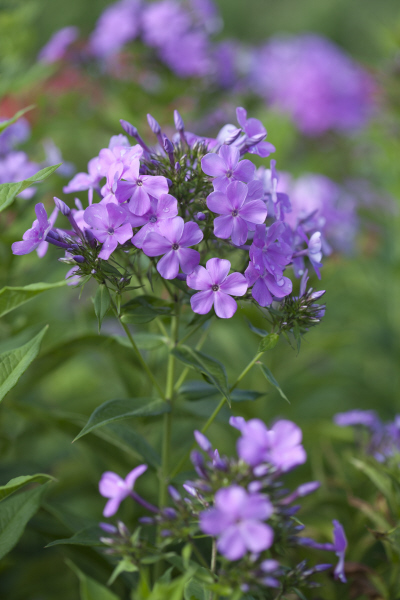Phlox × arendsii 'Luc's Lilac'
phlox 'Luc's Lilac'
A perennial to 1.2m in height with oval green leaves and a neat growth habit. Flowers, appearing in midsummer, are a lovely soft pinky-lilac and are lightly scented
Size
Ultimate height
1–1.5 metresTime to ultimate height
2–5 yearsUltimate spread
0.5–1 metresGrowing conditions
Moisture
Moist but well–drainedpH
Acid, Alkaline, NeutralColour & scent
| Stem | Flower | Foliage | Fruit | |
| Spring | Pink Purple | Green | ||
|---|---|---|---|---|
| Summer | Pink Purple | Green | ||
| Autumn | ||||
| Winter |
Position
- Full sun
- Partial shade
Aspect
South–facing or West–facing or East–facing
Exposure
Exposed or Sheltered Hardiness
H7Botanical details
- Family
- Polemoniaceae
- Native to GB / Ireland
- No
- Foliage
- Deciduous
- Habit
- Clump forming
- Genus
Phlox may be evergreen or herbaceous, mat-forming or erect perennials or shrubs, with simple leaves and salver-shaped flowers in terminal clusters
- Name status
Accepted
How to grow
Cultivation
Grow in fertile, moist soil in full sun or partial shade. See phlox cultivation for further advice
Propagation
Propagate by division in spring or autumn
Suggested planting locations and garden types
- Cottage and informal garden
- City and courtyard gardens
- Patio and container plants
- Low Maintenance
- Cut flowers
- Flower borders and beds
Pruning
Deadhead to promote flowering and cut back in autumn
Pests
Generally pest-free
Diseases
May be susceptible to downy mildews and a leaf spot
Get involved
The Royal Horticultural Society is the UK’s leading gardening charity. We aim to enrich everyone’s life through plants, and make the UK a greener and more beautiful place.
